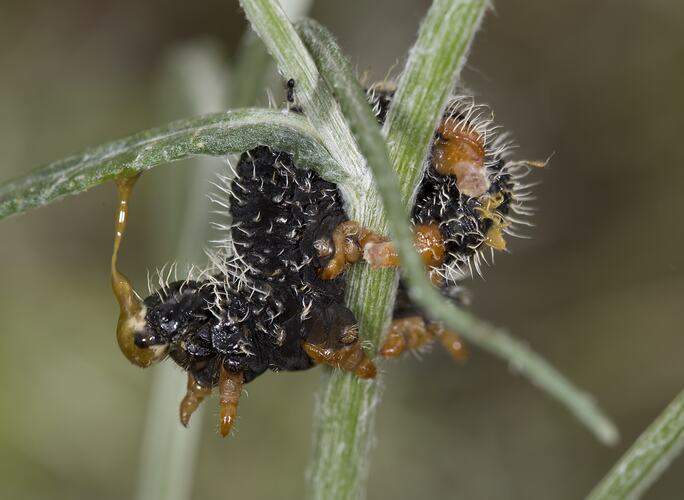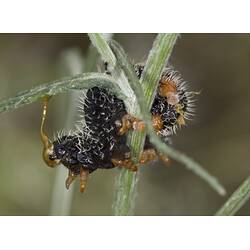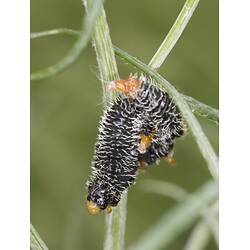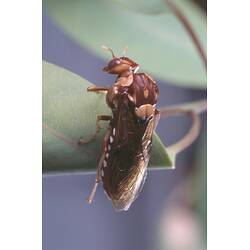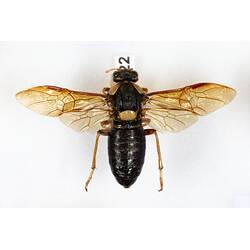General Description
Spitfires, also known as sawflies, are robust insects that are closely related to ants, bees and wasps (hymenopterans). Adults of most species are typically yellow, tan, brown, orange or reddish in colour, and have two pairs of membranous wings, a robust body, and short, clubbed antennae. They are readily distinguished from other hymenopterans by the lack of a narrow waist. The larvae are caterpillar-like, and are mostly yellow or black in colour, though are sometimes tinted pink or red. Adults to 2.2 cm; larvae to 8 cm in length.
Biology
The name Sawfly is derived from the saw-like ovipositor, which the adult female uses to cut into leaves where she lays her eggs. The name Spitfire refers to the larvae, which resemble caterpillars and aggregate on the leaf surface. When disturbed, the larvae raise their heads and spit foul-smelling yellow-green liquid. Adults are found in late summer, while larvae are active through winter and spring. There are 19 named Perga species in Australia.
Distribution
Across southern Australia.
Habitat
On foliage of trees and shrubs, especially Eucalyptus.
More Information
-
Animal Type
-
Animal SubType
-
Brief Id
Black/yellow caterpillar-like larvae; robust, tan adult.
-
Colours
Yellow, Red, Brown, Orange
-
Maximum Size
2.2 cm
-
Habitats
-
Diet
Herbivore
-
Hazards
Stingless
-
Endemicity
-
Conservation Statuses
CITES: Not listed, FFG Threatened List: Not listed, EPBC Act 1999: Not listed, IUCN Red List: Not listed
-
Taxon Name
-
Scientific Author
Leach, 1817
-
Kingdom
-
Phylum
-
Subphylum
-
Class
-
Order
-
Superfamily
-
Family
-
Subfamily
-
Genus
